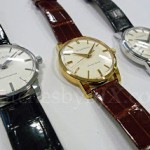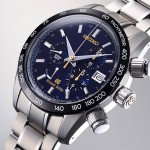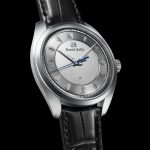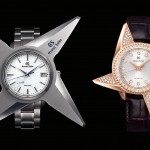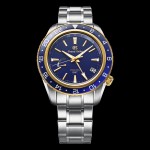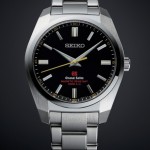Up Close: Grand Seiko Elegance Spring Drive 20th Anniversary
SBGZ001 and SBGZ003 from the Micro Artist Studio.
At Baselworld last year, Seiko unveiled its take on the ultimate time-only watch, the Grand Seiko Elegance Collection Spring Drive 20th Anniversary SBGZ001. The Grand Seiko SBGZ001 is powered by essentially the same movement as found in the Credor Eichi II, but dressed up with an engraved platinum case and dial, while also priced at quite a bit more than the Eichi II, with a retail of US$76,000.
Also launched at the same time was the Grand Seiko SBGZ003, which is almost the same watch – having the same movement but minus the engraving on the case and dial, resulting in a US$57,000 price tag.
With their cushion-shaped cases and dauphine hands – the hallmarks of the newish Elegance Collection – both the SBGZ001 and SBGZ003 are slightly more retro in style than the stark and contemporary Eichi II. But more importantly, they are powered by the 9R02, which is an upgraded version of the movement in the Eichi II and the most gorgeous movement ever found in a modern Grand Seiko.
In short, both the SBGZ001 and SBGZ003 are watches with incredibly well finished movements – amongst the best in modern watchmaking anywhere – but with a couple of caveats, discussed below.

The Grand Seiko SBGZ001 – watch courtesy of Mark Cho, founder of menswear store The Armoury


The 9R02 Spring Drive movement
Masterpieces from the studio
All of Seiko’s top of the line watches – both Grand Seiko and Credor – come from the Micro Artist Studio, a workshop set up in 2000 to produce the finest watches with hand-finished movements.
Staffed by just 10 people, the workshop produces only about 40 watches a year, all assembled and decorated in the traditional manner. In fact, during the early years of the workshop’s existence, two of its watchmakers spent some time studying finishing techniques with Philippe Dufour.
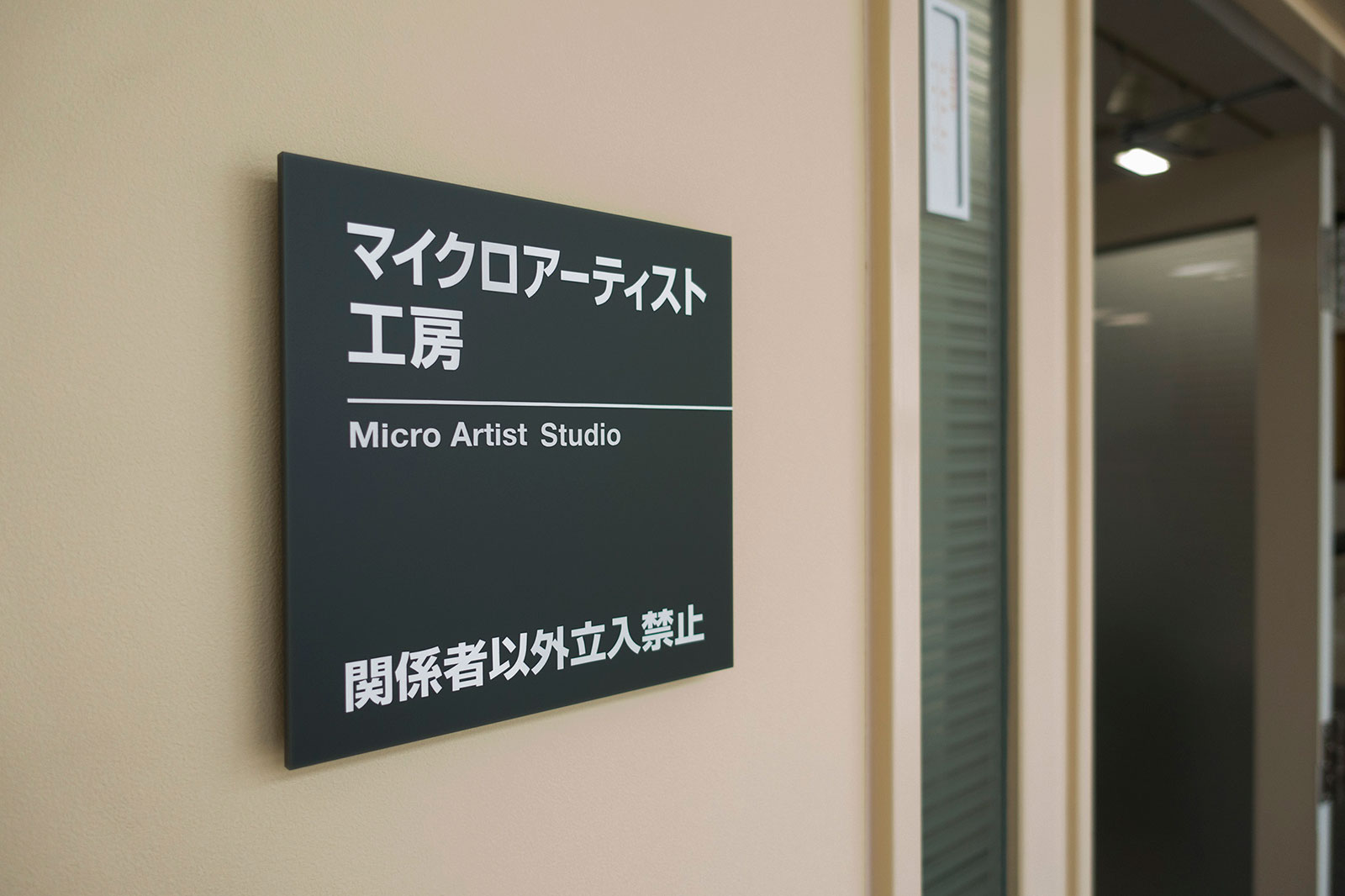
Photo – ND Chow
Sited in Shiojiri, a small town in mountainous Nagano Prefecture in central Japan, the workshop is located within the larger Shinshu Watch Studio, a factory owned by Seiko-Epson.
Unusually, this factory produces only movements that are Spring Drive, the proprietary technology developed by Seiko that combines a mechanical barrel and going train with an electronically-governed regulator. As a result, all of the Micro Artist Studio watches, paradoxically, are also Spring Drive.
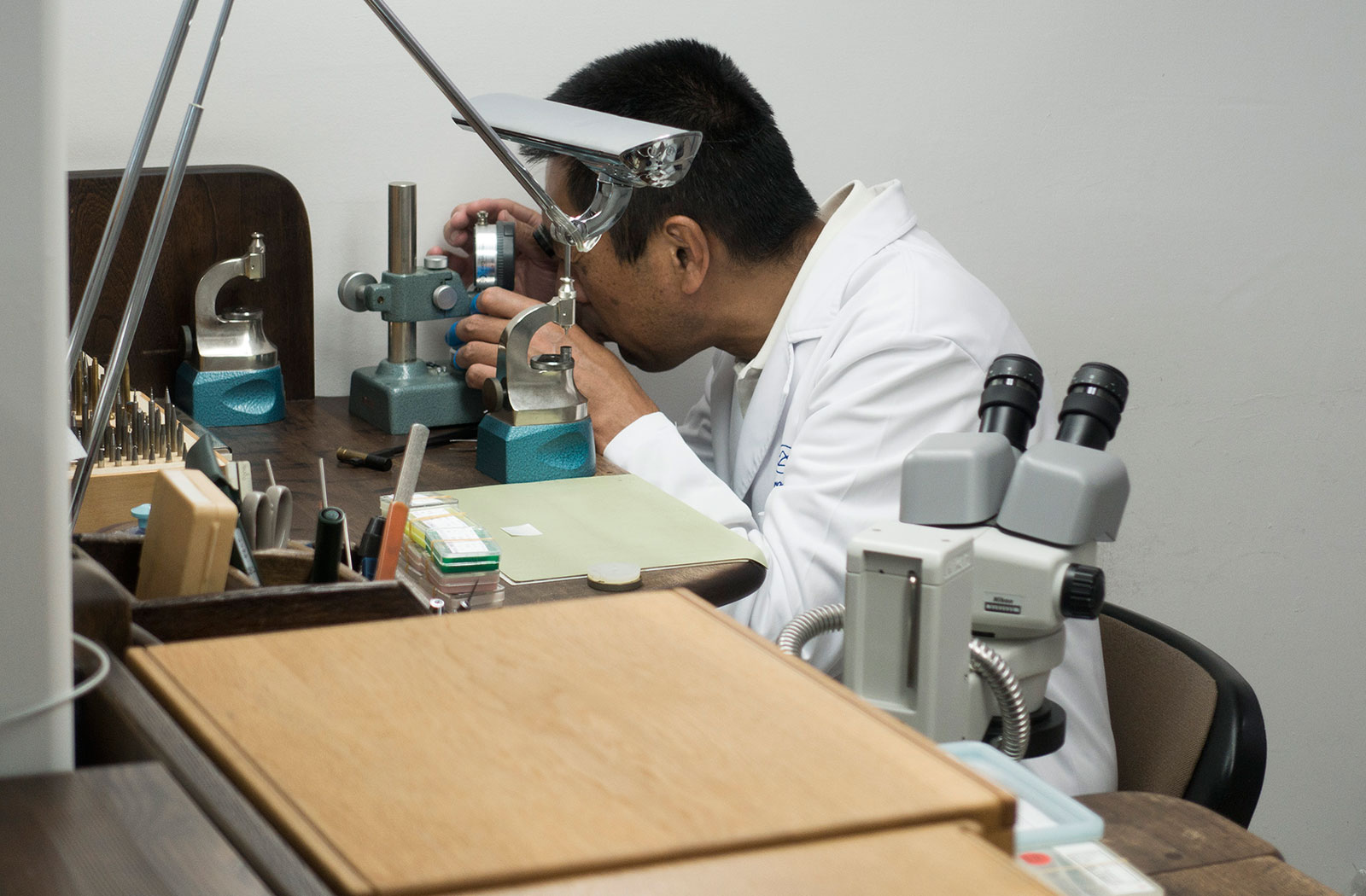
Checking the height of a component with a vertical micrometer. Photo – ND Chow
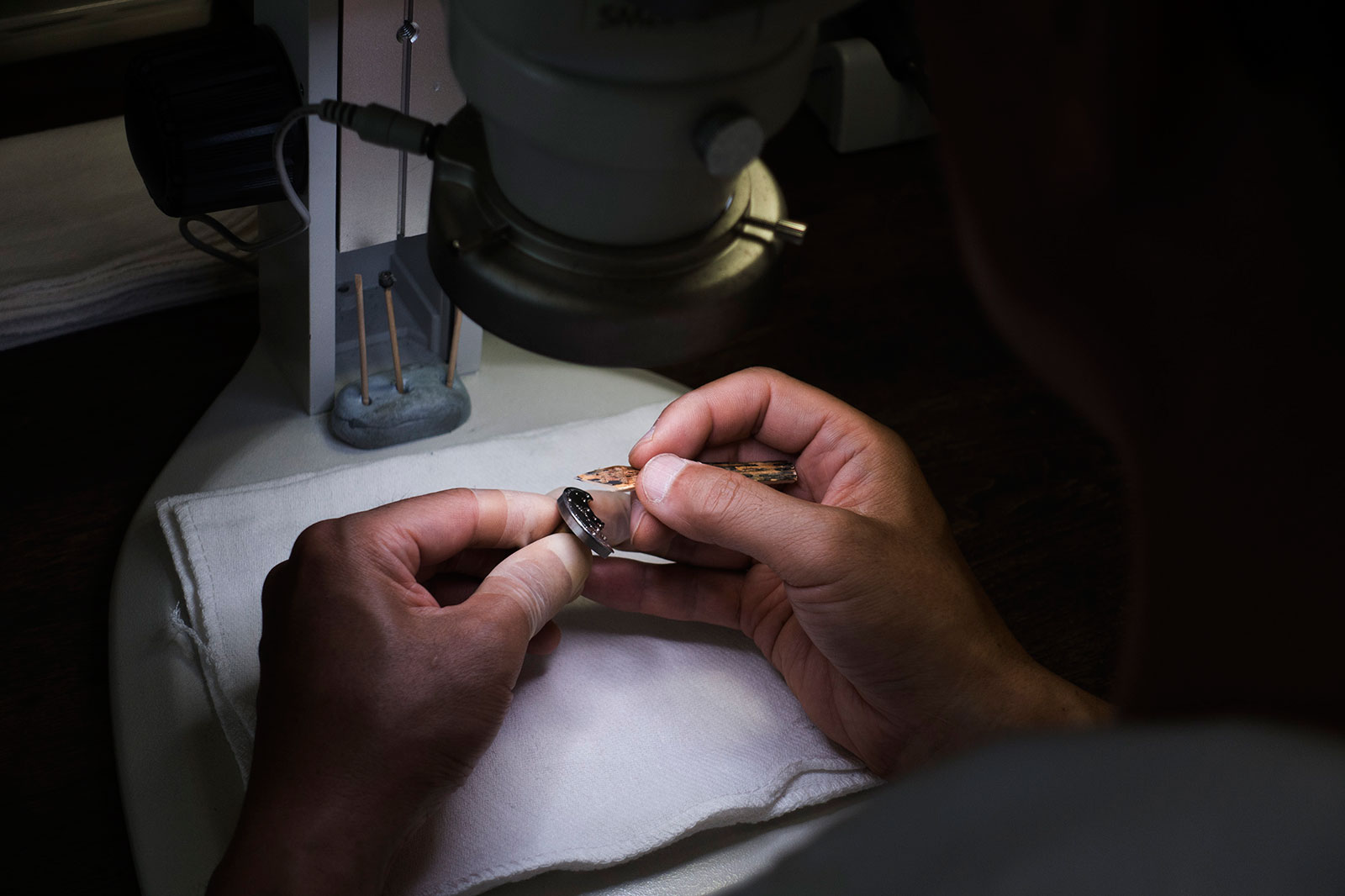
Polishing the bevels of a movement plate. Photo – ND Chow
The Micro Artist Studio had its first hit with the Credor Eichi I of 2011, which demonstrated Seiko could produce a time-only wristwatch finished to the same degree as the very best watchmakers in Switzerland, a watch in the same category as the Philippe Dufour Simplicity or Akrivia Chronometre Contemporain.
A limited edition of just 25 watches, the Eichi I wasn’t the workshop’s first creation. A few years before, the workshop had presented the Credor Spring Drive Sonnerie and then the Credor Minute Repeater, both finished to the same degree as the Eichi I but less appealing, being highly complicated and weighed down by six-figure price tags.
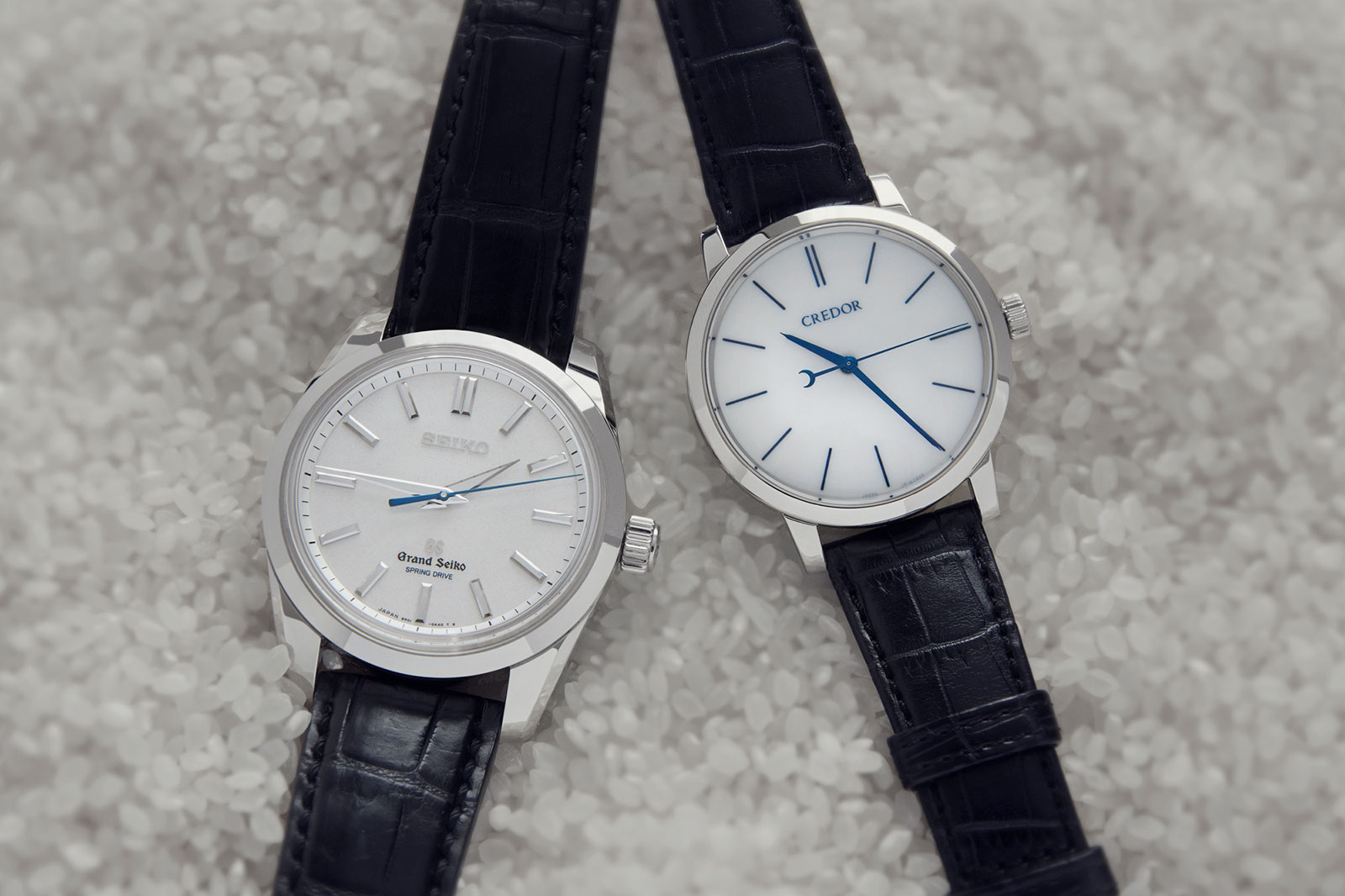
The Grand Seiko 8 Days (left) and Credor Eichi II
Although not many watches leave the workshop each year, the Micro Artist Studio has expanded its repertoire rapidly over the years – resulting in a surprisingly wide range of offerings.
In 2014, the Credor Eichi II arrived in a platinum case, followed by a version in rose gold in 2018. And in between, at Baselworld 2016, Seiko unveiled the Grand Seiko 8 Day SBGD201, a monumental, 43mm watch that became the first Grand Seiko produced at the Micro Artist Studio. A year later, the Grand Seiko 8 Day was also offered in a rose gold case.
Finally, Baselworld 2019 saw the debut of four Grand Seiko Elegance Collection Spring Drive watches – the high-end SBGZ001 and SBGZ003, along with the similar, but much less expensive, SBGY002 and SBGY003.

The Grand Seiko Elegance trio: SBGZ001, the entry-level SBGY003 (that’s not produced at the Micro Artist Studio), and SBGZ003
New and improved 9R02 (and 9R31)
A lovely watch in person, the Grand Seiko SBGZ001 is about the same size as the Eichi II – with a similarly gorgeous movement – but with a fully engraved, cushion-shaped case that gives it an ornate, slightly retro look. The SBGZ003 feels identical, but with a cleaner, more streamlined look. Both share a gently domed sapphire crystal that enhances the retro feel.
Both watches are part of the commemorative collection to mark the 20 years since Spring Drive was invented. So it is fitting that the anniversary is marked with arguably the greatest Spring Drive movement to date, the 9R02.

The very slightly domed sapphire crystal
The greatest, however, is tempered by another movement launched last year, the 9R31. Featuring the same architecture as the 9R02 – with the same layout and double mainsprings – but without the separate bridges, hand finishing and Torque Return System, the 9R02 is found in the Grand Seiko SBGY002 and SBGY003, the entry-level Elegance Collection Spring Drive watches; the steel SBGY003 is priced at just US$7,600.
The 9R31 is not made at the Micro Artist Studio, but it is produced in the same Shiojiri facility. Though it is substantively different, the 9R31 is also similar enough to its high-end cousin that one wonders why.

The 9R02
Returning to the top of the line 9R02: it is at heart an upgraded version of the 7R14 inside the Eichi II. Both are fundamentally similar; they share the same functions and layout, but the 9R02 has a lengthened power reserve of 84 hours (compared to 60 hours in the Eichi’s 7R14).
The 40% gain in autonomy is the result of two features. One is the use of twin, stacked mainsprings within a slightly taller barrel (as opposed to one mainspring in the 7R14), which increases the power reserve by about 24 hours, a 50% increase over the single barrel of the 7R14.

The open-worked barrel that reveals the upper of the two mainsprings
And the other is the Torque Return System that was pioneered in the Eichi’s 7R14 movement. This recycles the excess energy from the twin mainsprings when they are near full wind, so for the first 48 hours of the movement’s power reserve, about a third of the energy produced is recycling back into winding the mainsprings, which provides an additional 12 hours or so of running time.
The finer details
While the technology is interesting, it is not what the Grand Seiko SBGZ001, or the Eichi for that matter, is about. What truly sets the watch apart is the finishing of the 9R02 movement.
The 9R02 is decorated with the same degree of skill, care, and attention to detail as the movement in the Eichi II – hardly surprising since it is made in the same workshop. That can be discerned across all of the movement components, the brushed surface of the bridges, bevelling, countersinks, screw heads, and so on.
But the 9R02 movement has more decorative flourishes, taking it to a slightly higher level. Take for instance the rounded, polished bevel on the circumstance of the barrel, possible because the barrel is higher than that in the Eichi II, because it has to accommodate the two mainsprings.

The barrel sits slightly higher than the bridges, and is finished with a polished bevel on its rim
But most obvious – and most beautiful – is the sharp, inward corner on the edge of the going train bridge, right next to the glide wheel (a unidirectional, high-speed wheel that’s the Spring Drive equivalent of a balance wheel).


The inward angle separates the two jewels, both held by shock absorbers, one for the glide wheel and the other for the equivalent of the escape wheel
Arguably the definitive detail in decorative finishing – at least until it can be convincingly reproduced by machine – the inward angle on a bevelled edge is numerous in the Akrivia Chronometre Contemporain, and in the Dufour Simplicity, complemented by sharp, outward angles. The inward angle was missing from the 7R14 in the Eichi II, a failing that has been fixed in the 9R02.
If there’s an element in the 9R02 that I can do without, it is the solid gold plate on the going train bridge. Intended for an engraving of the owner’s name or motto, the plate is decorated to the same degree as the rest of the movement, but feels unnecessarily showy. And it also feels like a bit too much like a Dufour Simplicity, which has a pair of plates, for the serial number and branding.

This particular example is engraved “Optimism” on the movement plate
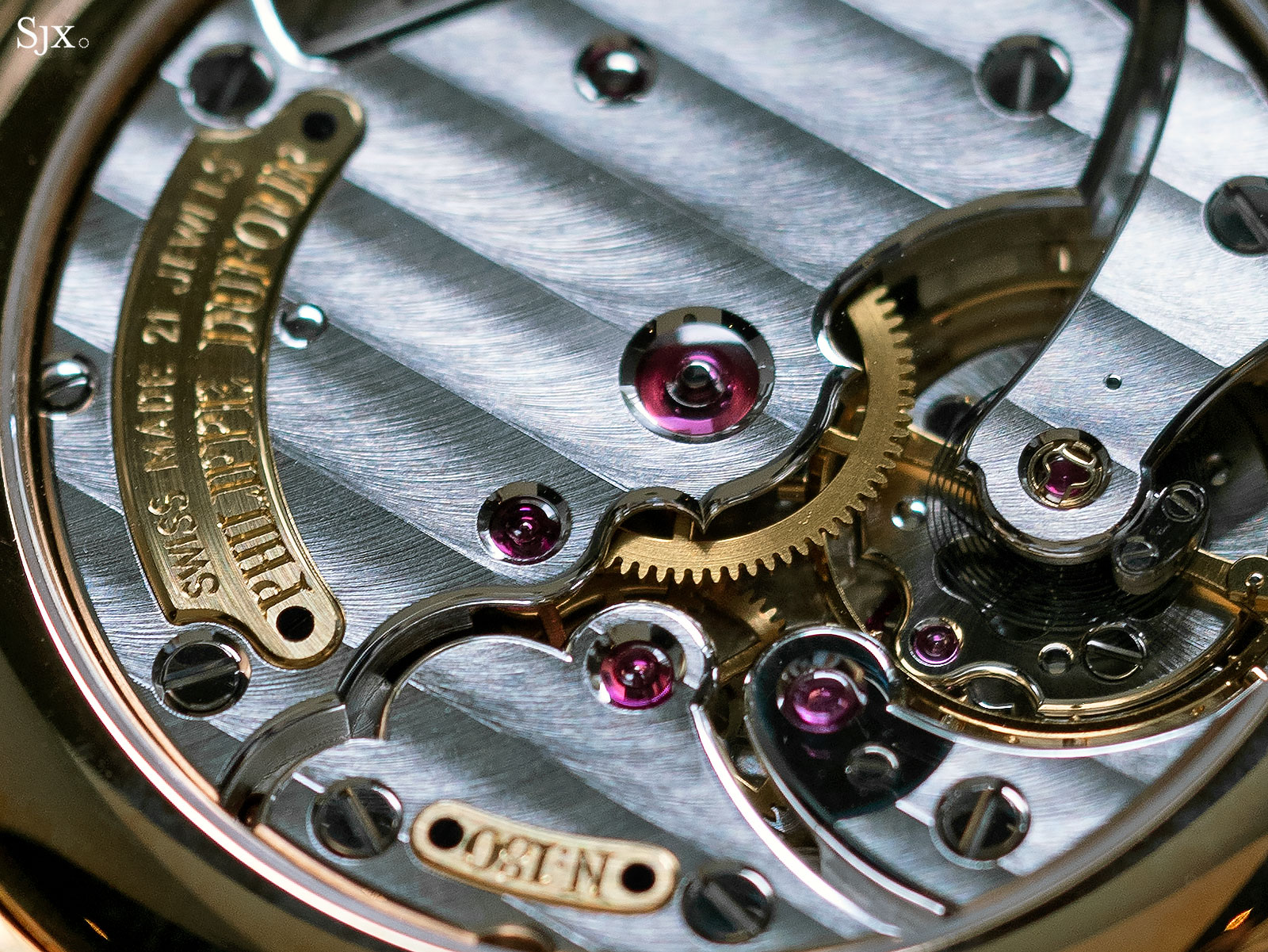
The barrel bridge of the Simplicity with twin outward angles; also note the twin gold plates
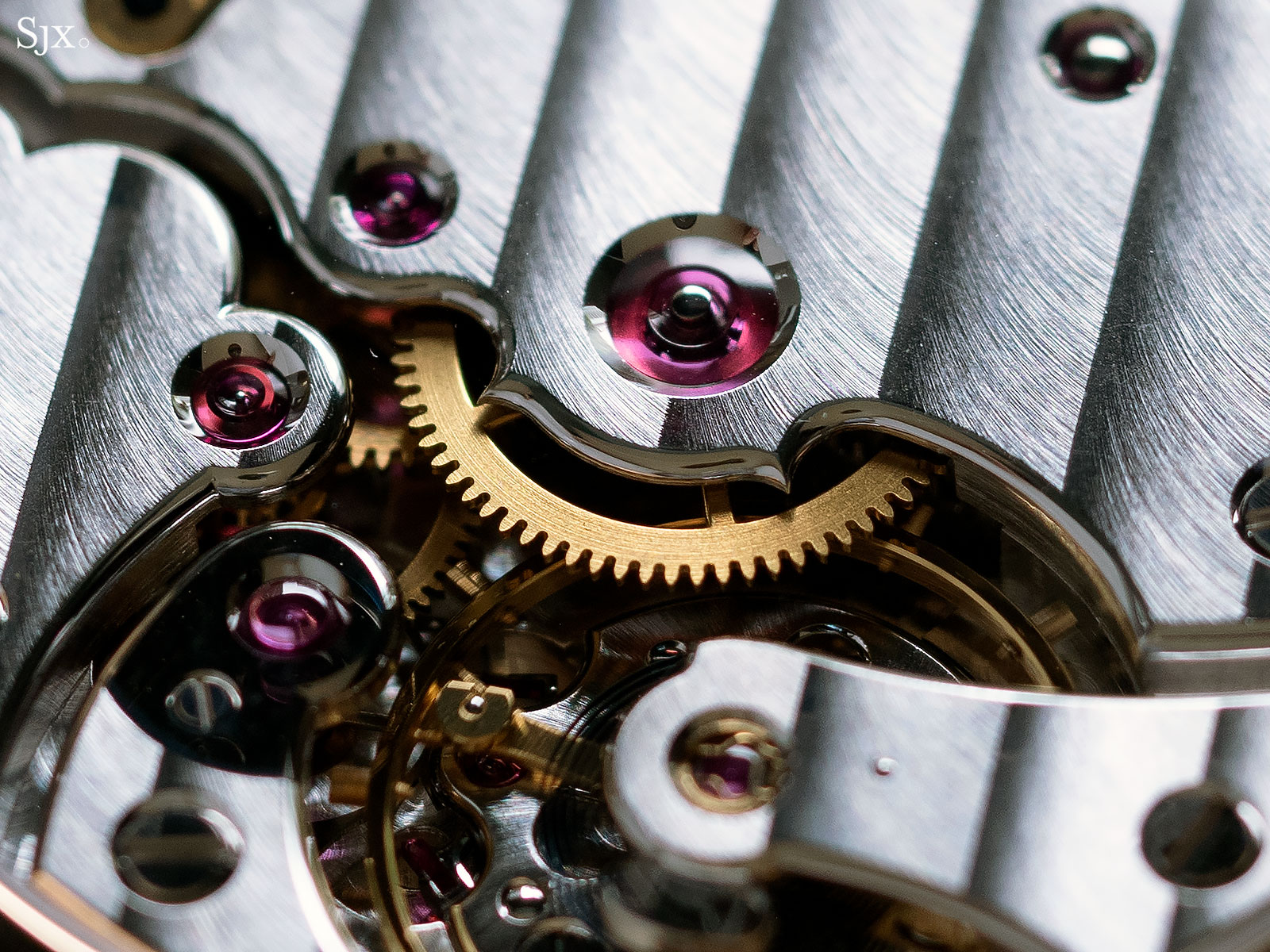
The two “horns” over the centre wheel
“Hand carved”
Occasionally described as “hand carved”, the case and dial are finished with an engraved motif inspired by the snowfall around Shiojiri. Meant to recreate the snow found on Nagano’s mountains, known as 雪白, or yukishiro (which translates literally as “snow white”), the engraving is naturally reminiscent of the popular Grand Seiko “snowflake” dial, which takes inspiration from the same winter landscape.
The engraving on the case and dial is done with a hand-operated tool that resembles a tiny drill. A craftsman skilfully creates a pattern made up of clusters of parallel divots that cover the case and bezel, engraved such that the pattern seemingly flows towards the lugs; a similar pattern, but arranged concentrically, covers the case of the Quartz Astron anniversary limited edition. The motif was likely inspired by the Quartz VFA ref. 3823-7030, an ultra-luxe quartz watch of the 1970s.



As with all Grand Seiko cases, the platinum case of the SBGZ001 is first finished with the Zaratsu technique, a flat, mirror polishing using a Sallaz machine, creating an extremely flat surface with sharp edges. Notably, the engraving is so finely applied that the case still retains its sharply defined edge.

The polished inner edge of the lugs, as well as the bevel on lower edge of the case band, are both left with a mirror polish, allowing the case to retain some of its metallic gleam. Also highly polished is the crown, which unlike the polished bits of the case, appears out of place and mismatched against the engraved finish.

The dial is finished with a similar engraving, but with a shallower grain that’s arranged vertically. And all of the markings on the dial, as well as the minute track, are engraved by machine, a feature once found on vintage Grand Seiko watches but today reserved for limited edition models.


Similarly, the hands and hour markers are solid 14k white gold, again a feature exclusive to limited editions. Because of that, the dial has an engraved star above six o’clock, an emblem that indicates it’s a Grand Seiko with “SD”, short for “special dial”, meaning fitted with solid gold markers.



The “SD” star
Concluding thoughts
The Grand Seiko SBGZ001, and by extension the SBGZ003, are tangibly better than the Eichi II; the 9R02 movement is decorated to slightly more elaborately than the 7R14 in the Eichi II. And the SBGZ001 also has a fancily finished case and dial.
That being said, both watches are similar enough to the Eichi II, in both feel and finishing, that neither is a must-have upgrade for an Eichi owner.
Between the SBGZ001 and SBGZ003: while the former has more decoration and is a 30-piece limited edition, it is much too expensive compared to the latter. The respective retail prices, US$76,000 and US$57,000, mean the premium for the engraved case and dial is US$19,000, which feels disproportionately rich.
And though the SBGZ003 is not be a limited edition, production numbers at the Micro Artist Studio are limited to start with, so it will be uncommon in any case.

The final question is a broader one: does the proliferation of models diminish the appeal of the finely crafted watches from the Micro Artist Studio?
To a degree – yes. The watches made by the Micro Artist Studio are the best of the best, flagship products the encapsulate a no-expense-spared, and very Japanese, pursuit of quality.
But now there are several of them, all in production simultaneously. It would be akin to Ferrari rolling out the LaFerrari while still having the F40, F50 and Enzo in production – one upping the last-best supercar while keeping all of its predecessors in production.
But Grand Seiko can get away with it, for now. The brand is still at the early enough stages of its international growth that it has leeway to expand the catalogue since there are new markets to be conquered. And crucially, the work at the Micro Artist Studio is still exemplary. There are just two or three watches currently in production with a movement finish better than the Grand Seiko SBGZ001 or SBGZ003.
The watch pictured belongs to Mark Cho, founder of menswear store The Armoury.
Key facts and price
Grand Seiko Elegance Spring Drive 20th Anniversary “Hand Carved”
Ref. SBGZ001
Diameter: 38.5mm
Height: 9.8mm
Material: Platinum
Water resistance: 30m
Movement: 9R02
Functions: Hours, minutes, seconds, and power reserve indicator
Winding: Hand-wound Spring Drive
Power reserve: 84 hours
Strap: Crocodile with platinum folding clasp
Availability: At Seiko boutiques and selected retailers worldwide
Price: US$76,000, or 8 million Japanese yen before taxes
For more information, visit Grand-seiko.com.
Back to top.

